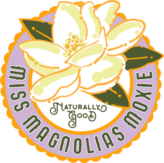Thuja: (Thuja occidentalis, Pine Family)
Common Name: Arbor-Vitae, Yellow Cedar
Medicinal Part: Branchlets and leaves
Description: The Thuja is a handsome ornamental evergreen much cultivated for hedgerows and windbreaks, grows 20-40 feet high with a trunk diameter of 2-4 feet. The trunk often buttressed at the base and sometimes distorted and twisted; branches short, the lower ones horizontal, the upper closely crowded with foliage and forming a dense conical head. Bark light brown, shredded, separating into long narrow strips. The leaves are bright green in overlapping scales, 4 rows on the two-edged small twigs, the middle row flat with a tiny slightly raised tubercle on each scale; with an aromatic odor when crushed. Cones are small, when very young pale green, about 1/2 inch long; when old, light reddish-brown with 6-12 pointless things oblong scales.
Properties and Uses: American arbor-vitae was much used by many native North American Indian tribes as a medicine to treat fevers, coughs, headaches, swollen hands, and rheumatic problems. The plant has an established antiviral activity and is most commonly used in modern herbalism to treat warts and polyps, being prescribed both internally and externally for these conditions. The plant can be used to induce menstruation and so should not be prescribed for pregnant women. The recently dried leafy young twigs are alterative, anthelmintic, anti-inflammatory, antiseptic, aromatic, astringent, diaphoretic, diuretic and emmenagogue. The plant is being used internally in the treatment of cancer, especially cancer of the uterus. A tea made from the leaves is used in the treatment for bronchitis and other respiratory problems, colds, headaches and as a cough syrup. The plant’s diuretic properties make it useful in treating acute cystitis and bed-wetting in children. The leaves are used in steam baths in the treatment of rheumatism, arthritis, colds, etc. Externally, the leaves are used as a wash for swollen feet and burns. Extracts of the leaves can be painted on painful joints or muscles as a counter-irritant, improving local blood supply and thus facilitating the removal of toxins, easing pain and stiffness. A tincture of the leaves has been used in the treatment of warts, piles, bedsores, and fungal infections. The leaves and young twigs can be harvested as required and used fresh or dried. “Oil of white cedar”, obtained from the leaves, is an essential oil that is antiseptic, expectorant and rubefacient. It is used internally to promote menstruation and relieve rheumatism. This volatile oil is toxic and poisoning from overdoses has occurred, it should only be used under the supervision of a qualified practitioner and should not be prescribed for pregnant women. The oil also stimulates the heart and causes convulsions in high doses. A tea of the inner bark is used to promote menstruation and in the treatment of consumption and coughs. A homeopathic remedy is made from the leaves and twigs, gathered when the tree is flowering. It is used in the household as a treatment against warts, but also has a range of other applications that should only be prescribed by a competent homeopath. Boiled with lard the leaves form an excellent salve.
Dose and Preparation: Thuja is prepared by long infusion or tincture. For most indications, internal and topical use should always go together. Long infusion/short decoction: 3-6 grams per day. Tincture: 0.5-1.5 ml at 1:4 strength in 60% ethanol.
http://naturalmedicinalherbs.net/herbs/t/thuja-occidentalis=american-arbor-vitae.php, The Herbalist, Peter Holmes

